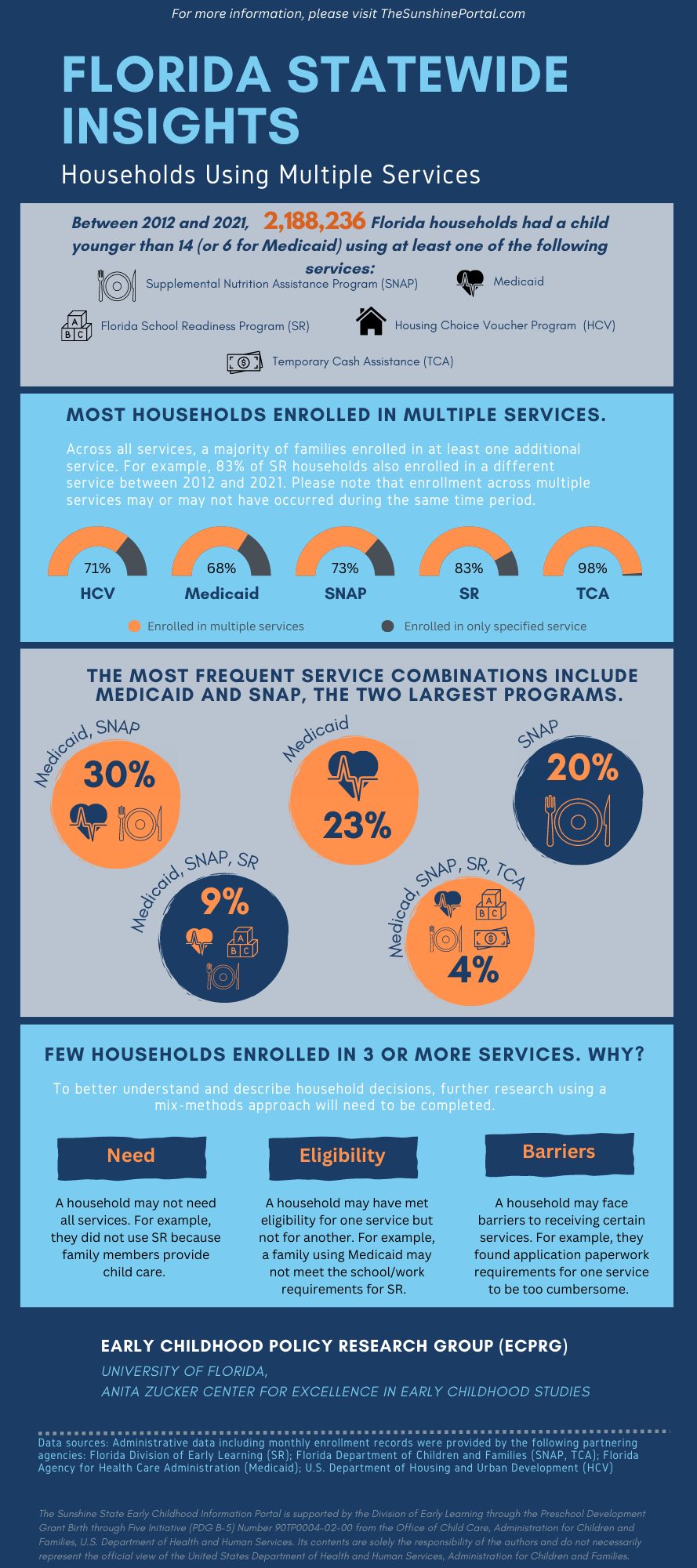ESSA Landing Page
The Economic Self Sufficiency Analysis (ESSA) is required to be conducted under Florida’s Committee Substitute for Committee Substitute for House Bill No. 1349. Analyses describe eligibility policy, eligible populations using services, and use administrative data to describe the experiences of households with at least one child below the age of 14 (below 6 for Medicaid) using one or more of the following services:





In partnership with the Florida Department of Education, Division of Early Learning, these final reports of findings were submitted to the Florida Legislature and the Governor’s office.
Households Using Multiple Services
The below visualization looks across administrative datasets to depict households who were (1) enrolled in at least one of the five ESSA services between 2012-2021 and (2) had at least one child below the age of 14 (below 6 for Medicaid) at the time-of-service use. Please note that households who present as using multiple services did not necessarily use all services at the same time. This graphic represents all program datasets in which a household was present but does not describe whether or not enrollment in multiple services were concurrent.
Data & Methodology
The ECPRG created a household-level identification variable (household ID) based on the available household information from the SNAP, TCA, Medicaid, SR and HCV programs.
Data were then restricted to the years 2012 to 2021 to ensure that all five ESSA services had complete datasets for each of the years included. Similarly, to maintain consistency across datasets, a household had to have at least one child under the age of 14 (6 for Medicaid) at the time-of-service use to be included in analyses. This resulted in 2,188,236 households represented in the visualization.
Using each of the five service record datasets and Household ID, the ECPRG created a variable labeled “Service.” This variable represents household service combinations including any service record that can be seen for an individual within the household. Variables for county of home address and household size were created by extracting information from available records at the last date in the data system. Therefore, households are reported with their most recent county of residence and household size. Where county and household size information were unavailable, instances were flagged as “NA.” This was mostly the case when the only service households ever used was Medicaid.
Finally, to properly structure the data, the ECPRG created a group identifier ID variable labeled “Combo ID,” which grouped together: service uptake combination, county, and household size. The number of households was obtained for each Combo ID.
User Guide

Contact Us:
Dévonja Daley
info.sunshineportal@coe.ufl.edu
The Sunshine State Early Childhood Information Portal is supported by the Division of Early Learning through the Preschool Development Grant Birth through Five Initiative (PDG B-5) Number 90TP0004-02-00 from the Office of Child Care, Administration for Children and Families, U.S. Department of Health and Human Services. Its contents are solely the responsibility of the authors and do not necessarily represent the official view of the United States Department of Health and Human Services, Administration for Children and Families.

